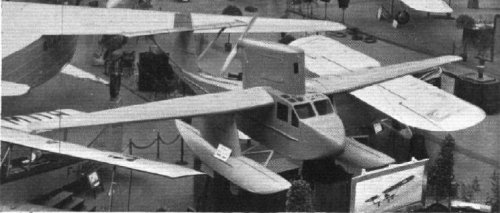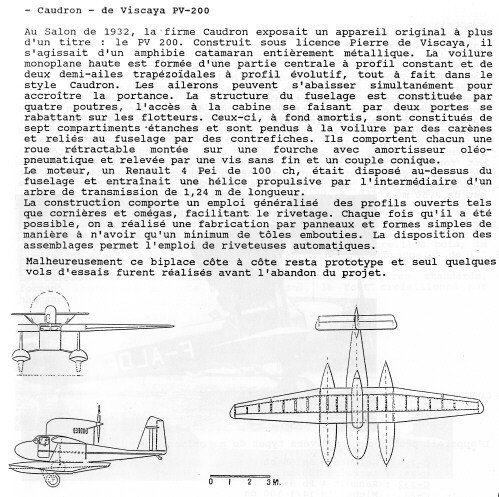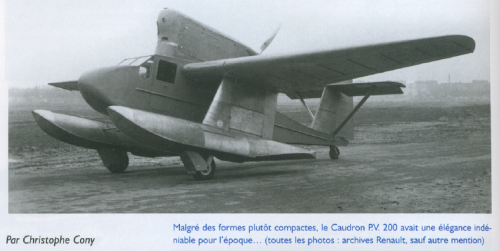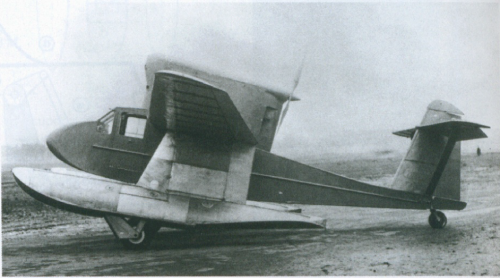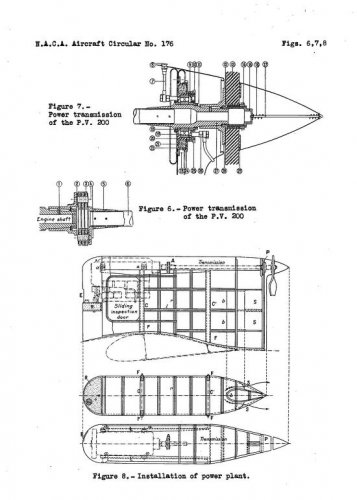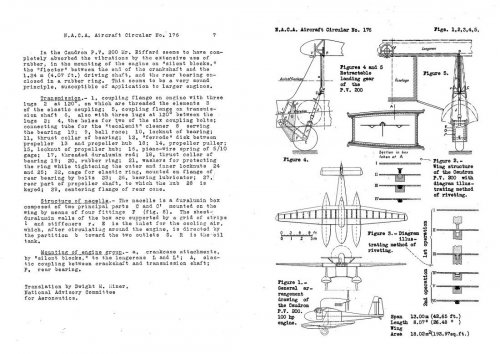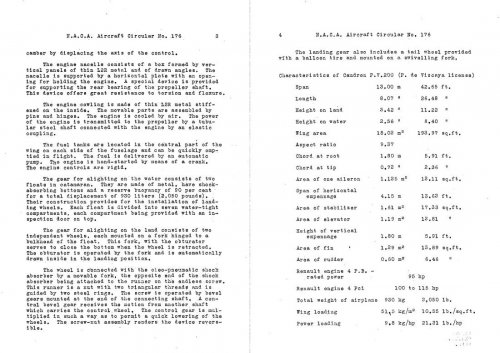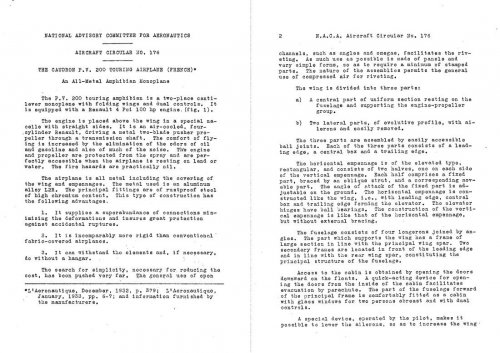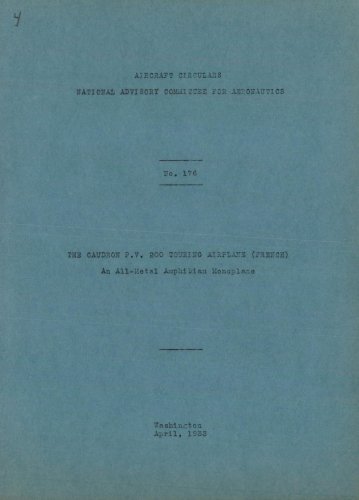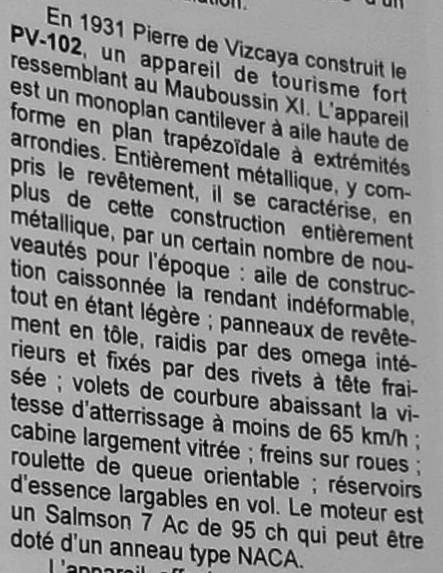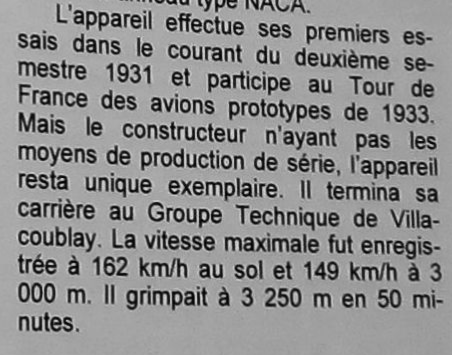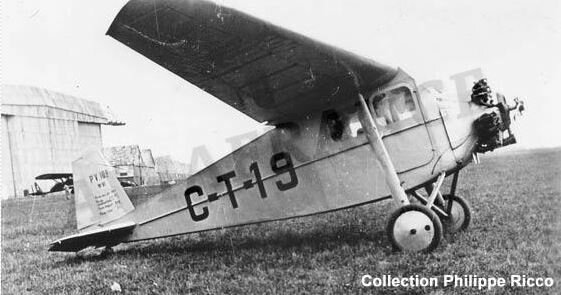From TU 306,
there was also PV-102;
In 1934 Prierre Vizcaya built the PV-102, a strong tourist look alike
airplane is at Mauboussin XI. The airplane is a high-wing cantilever monoplane of trapezoidal plan shape at ends rounded. Fully Metallic, including the coating, it is characterized by more of this construction
entirely metallic, by a certain number of novelties for the time: wing of boxed construction making it dimensionally stable, while being light; sheet metal cladding panels, stiffened by internal omega and fixed by countersunk rivets,
curvature flaps lowering the landing speed to less than 65 km / h;
largely glazed cabin; wheel brakes: swivel tail wheel; reservoirs
gasoline droppable in flight. The engine is a Salmson 7 Ac of 95 hp which
can be fitted with a NACA type ring.
The aircraft carried out its first tests during the second half of 1931 and
took part in the Tour de France of the prototype planes of 1933.But the manufacturer does not have the means of series production, the airplane
remained unique copy. He finished his career at Villacoublay Technical
Group. The maximum speed was recorded at 162 km / h on the ground
and 149 km / h at 3000 m. It climbed to 3,250 m in 50 minutes.

